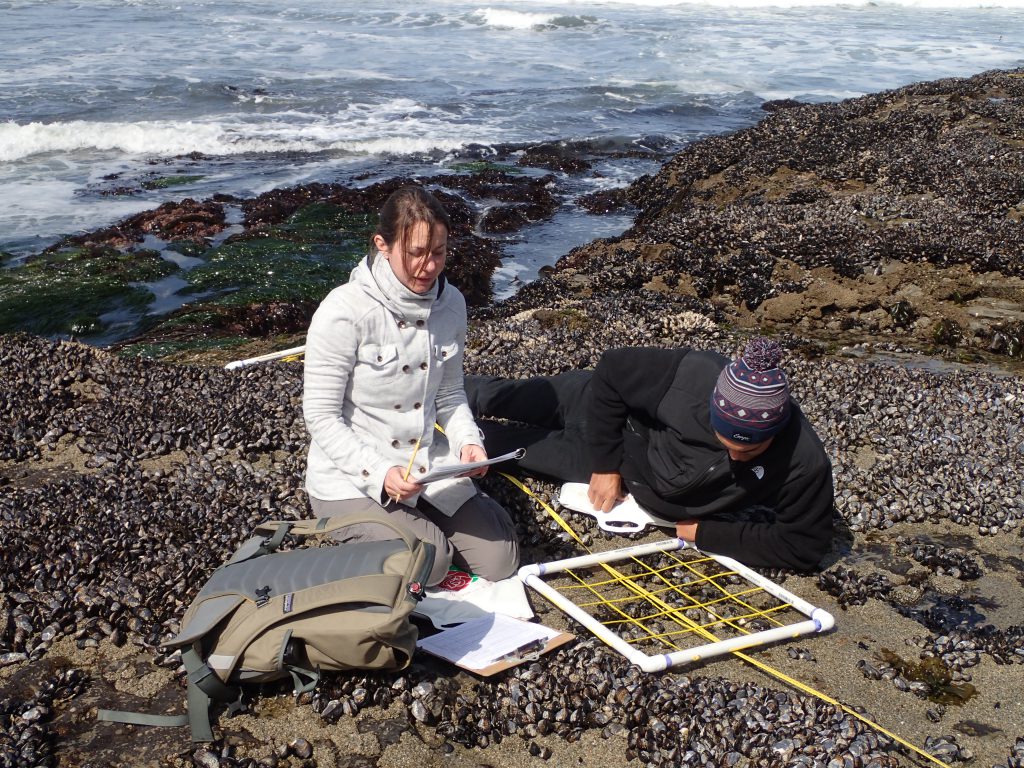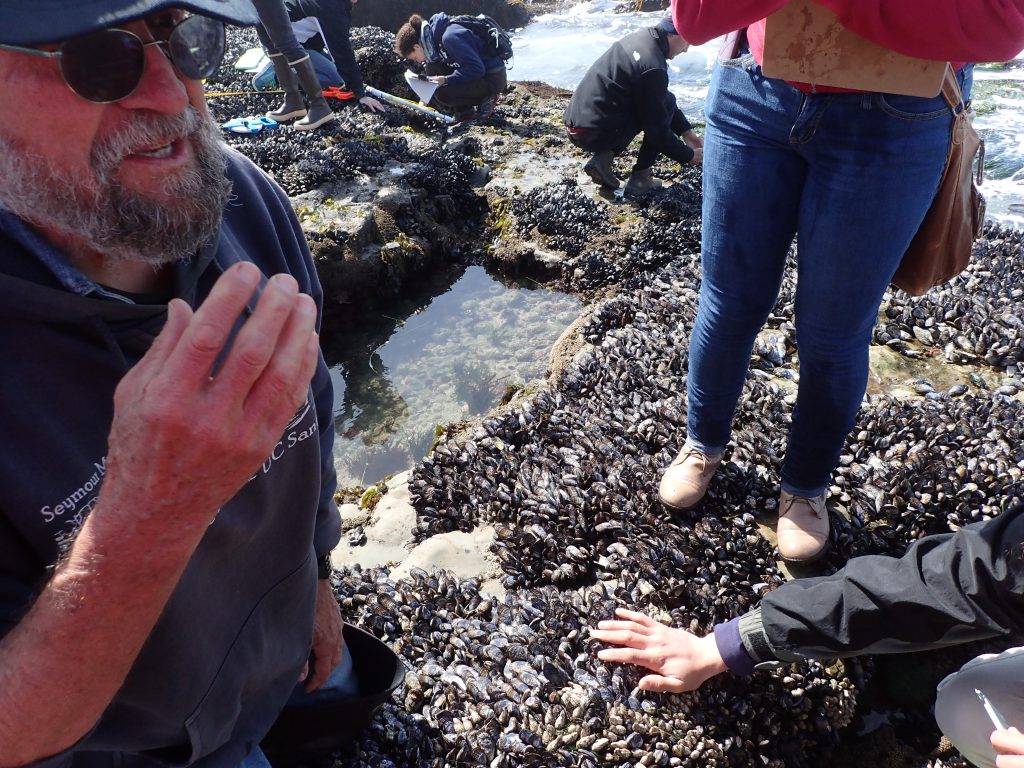In recent years, citizen science has become a very important provider of biological data. This movement relies on the participation of people who have an interest in science but may not themselves be scientists. There is some training involved, as data must be collected in consistent ways if they are to be useful, but generally no scientific expertise is required. The beauty of citizen science is that it allows scientists and science educators to share the experience of discovery with people who might not otherwise know what it’s like to really examine the world around them. I think it is a great step towards creating a less science-phobic society, one in which science informs policy on scientific matters.
LiMPETS stands for “Long-term Monitoring Program and Experiential Training for Students.” The program seeks both to give students experience doing real science and to establish baseline and long-term ecological data for California’s sandy shores and rocky intertidal areas. As an intertidal ecologist myself, I naturally wanted my students to participate in the rocky intertidal monitoring.
The LiMPETS coordinator for Santa Cruz and Monterey Counties is a woman named Emily Gottlieb. She and I decided to have my class monitor the site at Davenport Landing. Emily came to class two weeks ago to train the students in identifying the relevant organisms and recording the data.

15 April 2016
© Allison J. Gong
Tidepooling is easy and comfortable when you do it inside a classroom seated at a table. But today was all about the real thing. It was overcast and breezy when we met up with Emily at 09:30 and headed out to the site. At first the students seemed to be a little skeptical about the whole thing.
We were extremely fortunate to be joined this morning by Dr. John Pearse, Professor Emeritus of Biology at UC Santa Cruz, one of my graduate advisors, and the founder of LiMPETS. Dr. Pearse has been monitoring some sites, including this one at Davenport Landing, since the 1970s. He is THE person to talk to about intertidal changes in California over the past 40 years.
Years ago John set up permanent transect lines and plots at Davenport Landing, marking the origin of each transect with a bolt. The first thing we had to do when we got to the site was find the bolt. Then John ran out the transect line to the lowest point that students could work safely, given the conditions of tide and swell; this happened to be about 15 meters.
For the vertical transect, 1/2-meter square quadrats were placed at each meter. Some organisms were counted as individuals and others were marked as either present or absent in each of the 25 small squares within each quadrat. Emily gave the students their assignments and data sheets, and they spread out along the transect line.
Aside from the experience of learning how to do this kind of data collection, I hope the students understand what a privilege it is to have been in the field with John Pearse. He has such a thorough understanding of the intertidal that he is a treasure vault of knowledge. Here he is explaining what owl limpets are all about:
Interestingly, we didn’t find many owl limpets. And certainly not any of the big ones that I see all the time at Natural Bridges. John said that this is one of the differences between a protected area (Natural Bridges) and an unprotected one (Davenport Landing). Collecting is not allowed at Natural Bridges, and the owl limpets are left unmolested–by humans, at least–to grow large (10+ cm long is not uncommon). On the other hand, people do collect at Davenport and I’ve heard it said that owl limpets are good to eat; today we saw fewer than a dozen owl limpets and they were all small, none larger than 3 cm long.
The sun came out after a while, but the wind also picked up. The tide came up as well, and some of the students got more than a little wet. Overall they were real troopers, though, and I didn’t hear much complaining. Next week is the last lab of the semester, and we’ll be participating in another citizen science project. But that’s a tale for another day.
I did take advantage of the beautiful setting to have one of Emily’s LiMPETS volunteers (and a former student of mine!) take our class photo. Here we are, the Bio 11C class of 2016!








